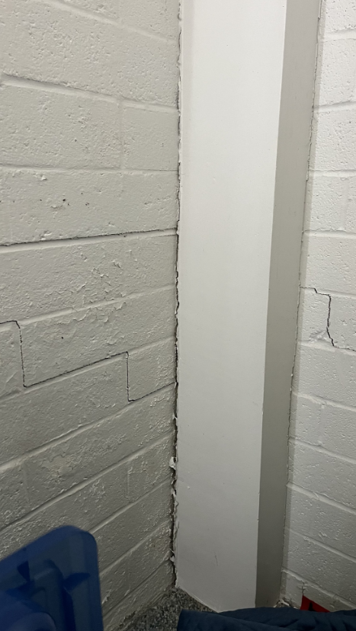Causes of Home Settling & Foundation Cracks
Home settling cracks, while common, can range from minor hairline cracks to more serious issues, often appearing as cracks in walls, ceilings, or around doors and windows. While small cracks are usually normal and can be patched, larger cracks or those that widen over time could indicate a foundation problem that needs professional attention.
What Causes Home Settling Cracks?
Normal Settling: Every house settles slightly as the soil beneath it compacts and the structure adjusts.
Uniform vs. Differential Settlement:
Uniform settlement: is when the entire house settles evenly, which is normal and can cause small, hairline cracks.
Differential settlement: occurs when different parts of the house settle at different rates, often due to uneven soil conditions or construction issues, and can cause larger cracks and other structural problems.
Other Factors:
Temperature and Humidity Changes: Building materials expand and contract with temperature and humidity changes, which can also contribute to cracking.
Moisture: Excessive moisture can cause cracks in exterior bricks or interior drywall.
Soil Type: Clay soil can expand and contract with changes in moisture, potentially causing foundation issues.
Signs of Settling Cracks:
Hairline cracks: These are small, narrow cracks that are generally harmless and can be easily patched.
Vertical cracks: Cracks that run straight up and down, often following the line where the wall meets the floor, can be a sign of foundation settlement.
Cracks around doors and windows: If doors and windows stick or don't close properly, or if you see cracks around the frames, it could indicate foundation settlement.
Stair-step cracks: These cracks, which look like steps, can appear in basements or crawl spaces and are a sign of foundation problems.
Sloping floors or walls: Uneven floors or walls can also indicate foundation problems.
Cracks that widen or appear suddenly: If cracks are widening or appearing suddenly, especially if they are larger than 1/4 inch, it's important to have them inspected by a professional.
When to Seek Professional Help:
Large cracks: If you notice cracks that are wider than 1/4 inch or that are widening, it's important to have them inspected by a professional.
Cracks that appear suddenly: If cracks appear suddenly, especially if they are large, it could indicate a serious foundation problem.
Cracks above doors and windows: Cracks in these areas can indicate foundation settlement.
Stair-step cracks: These cracks are a sign of foundation problems and should be inspected by a professional.
If you are unsure: If you are unsure about the cause of cracks or if you are concerned about your home's foundation, it's always best to seek professional advice.
What to Do:
Monitor the cracks: If you have cracks, monitor them to see if they are widening or growing.
Patch small cracks: You can patch small, hairline cracks with joint compound or spackling compound.
Seek professional help: If you have large cracks or cracks that are widening, it's important to seek professional help from a foundation repair contractor.
Address drainage issues: Ensure that water is properly draining away from your home's foundation.
Inspect your crawl space or basement: Look for signs of moisture or cracks in the foundation walls.





